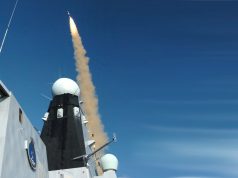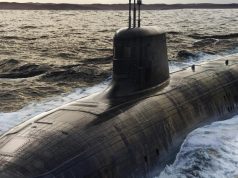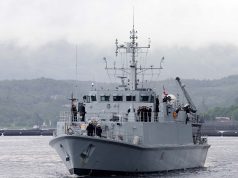The UK’s Royal Navy has come out as a clear winner of the Defence Command Paper, a review of the UK armed forces dubbed as the most comprehensive such undertaking since the end of the Cold War.
Released on March 22, the “Defence in a Competitive Age” paper outlines how the UK’s future force structure will look like.
Three of the most significant points of focus when it comes to upgrading the Royal navy capability are the confirmation of the Type 32 frigate program, first revealed by UK prime minister late last year, the construction of Multi Role Ocean Surveillance Ships (MROSS) and the upgrade of a Bay-class to a “littoral strike ship (LSS).” To fund the plans, the paper confirmed that two of the oldest Type 23 frigates will have to be retired early.
The paper also notes that the country already started the concept and assessment phase for a new Type 83 destroyer to replace the service’s current Type 45 destroyers in the late 2030s.
All in all, the UK plans to double investment in shipbuilding over the life of this Parliament, bringing it to over £1.7-billion a year. The number of surface warships is expected to rise to 24 escorts by 2030.
When it comes to the air force, the UK plans to continue to grow its combat air capacity over the next few years with the establishment of seven operational Typhoon squadrons. However, the planned purchase of 138 F-35B fifth-generation jets has officially been scaled back. While there is no official number on the number of aircraft to be procured, reports estimate the UK could cap off its F-35 fleet at up to 70 airframes.
One of the reason for the cut is the country’s focus on the Future Combat Air System (FCAS), which will attract more than £2 billion in investment over the next four years. FCAS will deliver a mix of crewed, uncrewed and autonomous platforms including swarming drones. The UK is also developing a “Loyal Wingman” uncrewed fighter aircraft prototype that will fly alongside manned aircraft.
To make room for investment in programs of the future, the Royal Air Force will have to retire some of the equipment currently in use. The entire Hawk T1 trainer aircraft fleet, as well as the Typhoon Tranche 1, will be out of service by 2025. The Royal Air Force will retire the BAe146 as planned by 2022 and take the C130 Hercules out of service by 2023.
Other cuts include the retiring of the E-3D Sentry this year, as part of the transition to the more modern fleet of three E-7 Wedgetail aircraft in 2023. It is worth noting that the UK originally planned to purchase five E-7 Wedgetail aircraft under a $1.98 billion contract from March 2019.
Arguably the biggest loser in the defense review is the British Army, which will see the number of soldiers reduced to 72,500 by 2025. This has been rationalized with a focus on unmanned systems and cyber warfare.
“The restructuring of the army means fewer units are required. The creation of Combat Service Support Battalions will require fewer separate units of logisticians, electrical and mechanical engineers, and medics. The infantry will be restructured into four divisions. These divisions will comprise a balanced number of battalions offering the full range of infantry roles. No cap badges will be deleted nor any redundancies required,” the papaer says.
In addition to reducing the number of regular troops, the army will not be upgrading its fleet of Warrior infantry fighting vehicles, which will be remain in service until replaced by the Boxer sometimes in the 2030s.
Of the 227 Challenger 2 main battle tanks currently in service, only 148 will be upgraded to the Challenger. The remaining fleet will be retired.
The release of the Defence Command Paper follows the publishing if the integrated security review last week, in which the defense ministry revealed plans to increase the nation’s nuclear stockpile from 180 warheads to as many as 260.



























